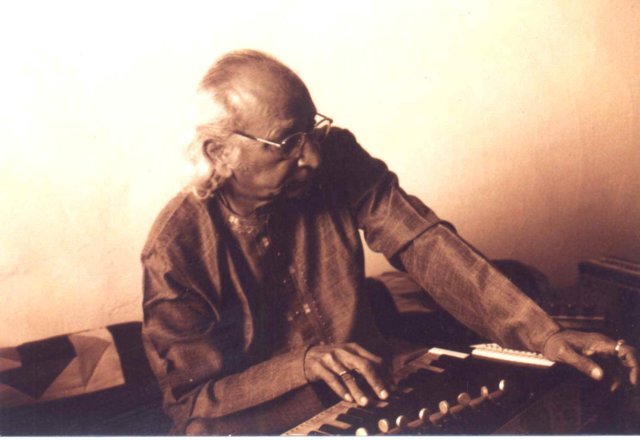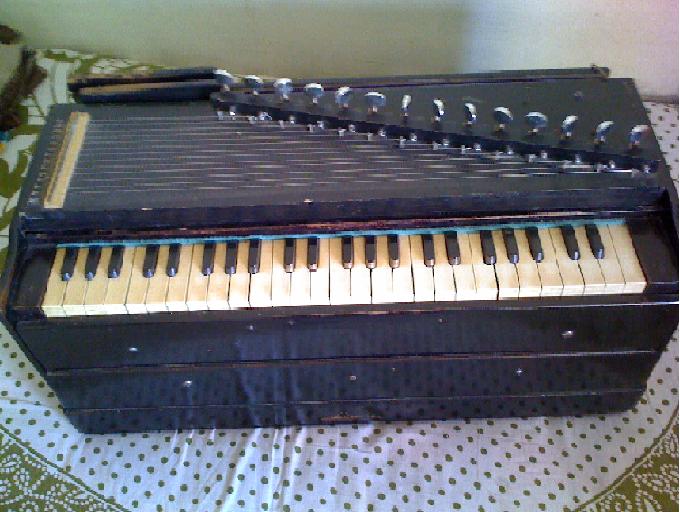Pandit Manohar Chimote
Pandit Manohar Chimote
Born on 27th March 1929 at Nagpur, Maharashtra, India, in a family of musical culture, Pandit Manohar Chimote had an earlier tutelage under the renowned maestro Pandit Bhishmadev Vedi, one of the most versatile artists of Hindustani Classical music, who tutored him in the art of playing harmonium. It was not a long period of time that Pandit Manohar Chimote as student spent with Pandit Vediji. Mere association of 3-4 months and with the capital of just an “Antara” (fist half part of a Indian Classical composition), of a “Gaat” (music word for the composition), Pandit Chimote generated the world of “Samvadini”.

Origination of Harmonium: The Harmonium is a rather young instrument. It was first made in France by Alexandre Debain in 1840, who patented his Harmonium in Paris on August 9, 1840. In this instrument he used a pressure winding system, with free reeds. Since that time his invention is used by many others. The Harmonium was produced by many others during the second half of the 19th century.

Original string box was very bulky in nature and was dis-proportionate compared to the size of Harmonium. So Pandit Manohar Chimote modified the string box in a way that it fits perfectly on top of the sound column above the keys. He also changed the tuning keys of the string box from the traditional style to the lever based keys. This gave this instrument a unique appearance and great convenience of use at the same time. Pandit Chimote also made changes in the keyboard of the harmonium to make it more responsive so that pressure control on the keyboard along with the air pressure in the bellows would display subtle expressions to the music being played on Harmonium. Based on the collective effort from Pandit Bhishmadev Vediji and Acharya Brihaspatiji , later, Pandit Manohar Chimote went ahead to the introduce the concept of ‘Gandhar Based Tuning’ for the first time in a Harmonium. This tuning system is the original tuning system used in Traditional Indian Classical Music. With this change Harmonium became complete instrument for solo performances equally capable as any other instrument.
Pandit Manohar Chimote had been the lonely star in the field of Samvadini solo performance and has received many appreciations and awards like “Surmani” award by Sursingar Parishad “Adarsh Sangeet Shikshak” Puraskar to name a few.